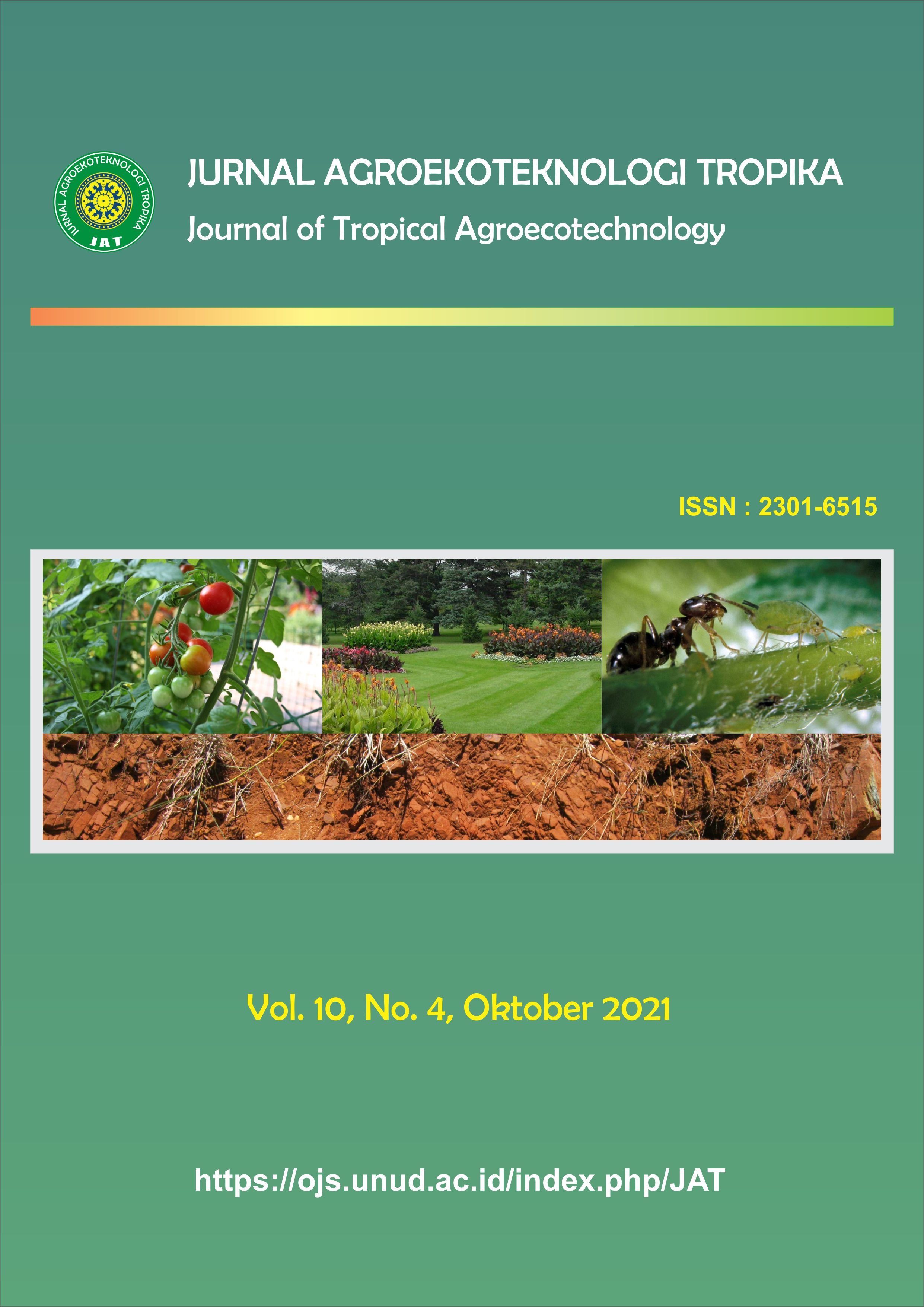Isolasi dan Uji Degradasi Bakteri Selulolitik dari Sampah Organik di TPST-3R Kertalangu dan TPST-3R Nangun Resik terhadap Bunga Jepun Bali
Abstract
Isolation and Degradation Test of Cellulolytic Bacteria from Organic Waste at TPST-3R Kertalangu and TPST-3R Nangun Resik Against Jepun Bali Flowers
Cellulolytic bacteria are microorganisms that produce cellulase enzymes that can synergistically hydrolyze crystalline cellulose into smaller oligosaccharides and eventually become glucose which can be used by these microorganisms as a source of nutrients for their growth. Cellulose acts as an inducer in cellulase synthesis which has two functions, namely as an inducer in enzyme synthesis and as a carbon source for cell growth. This study aims to obtain bacteria that are able to degrade organic waste samples using several methods, namely bacterial isolation, selective media, identification of bacterial colony morphology and qualitative bacterial degradation test. The results of this study indicated the presence of bacterial growth in selective CMC media and showed the ability of bacteria to degrade organic waste samples on Gelatine media. The results of bacterial isolation on CMC media with a dilution level of 10-8 were found 14 bacterial isolates in the TPST-3R Kertalangu sample and 16 bacterial isolates in the TPST-3R Nangun Resik sample. Each isolate was classified based on colony morphology, obtained three different isolates. Isolates taken from TPS Kertalangu were coded A, B, and C while isolates taken from TPST-3R Nangun Resik were coded E, F, and G. Most of the surface is convex, and flat. Based on the results of the calculation of the cellulolytic index, it was found that only isolate G was in the medium category and the other isolates had a high category value. The formation of a clear zone around the colonies that grew on CMC media showed that the isolate had cellulolytic activity measured qualitatively. The results of the analysis of the degradation ability of the Bali Jepun flower samples showed that isolate F was the fastest degraded isolate with an average of 3.5 days.



